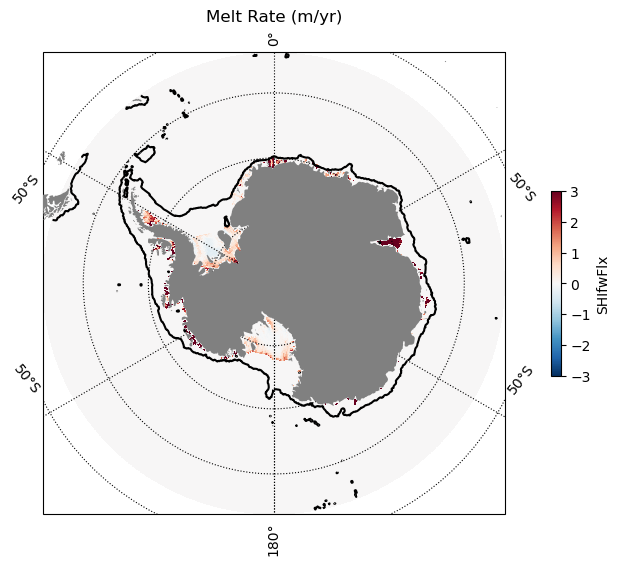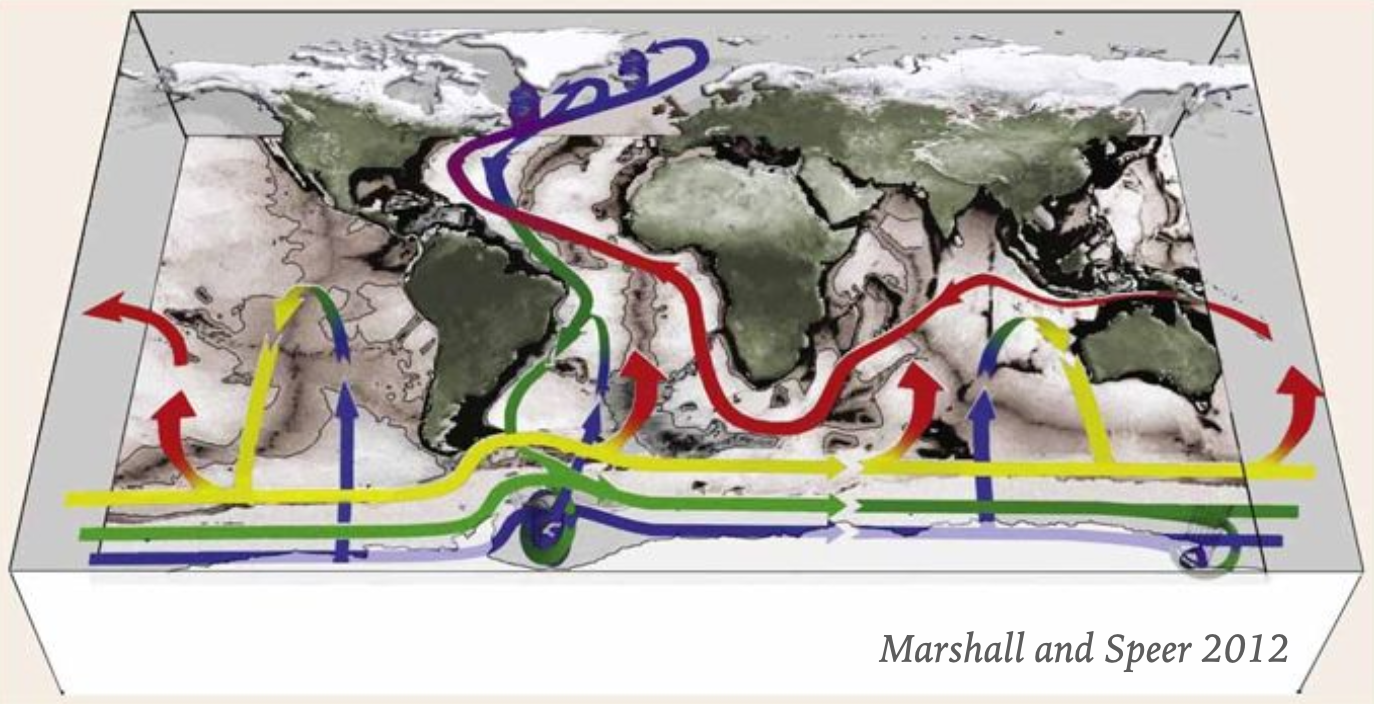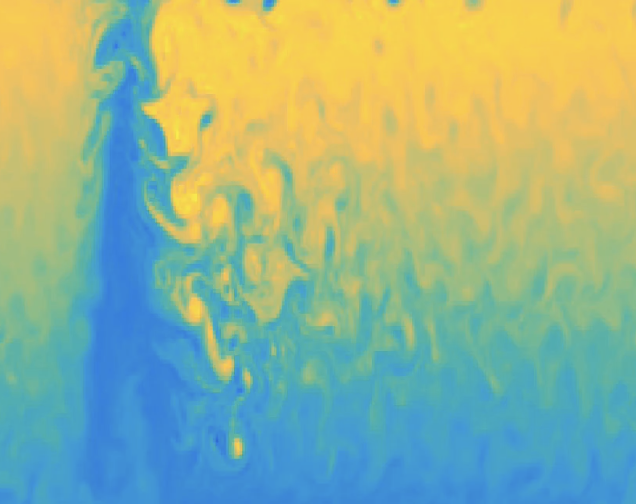Antarctic Circumpolar Current Dynamics
The Antarctic Circumplar Current flows around the continent of Antarctica in a clockwise fashion, as the most 'atmosphere'-like ocean current. This leads to unique dynamics, including standing meanders and eddy activity hot spots at undersea ridges. The dynamics here also drive localized air-sea carbon fluxes and focus the global overturning circulation, creating pathways of heat and carbon from the surface to the global deep ocean.



